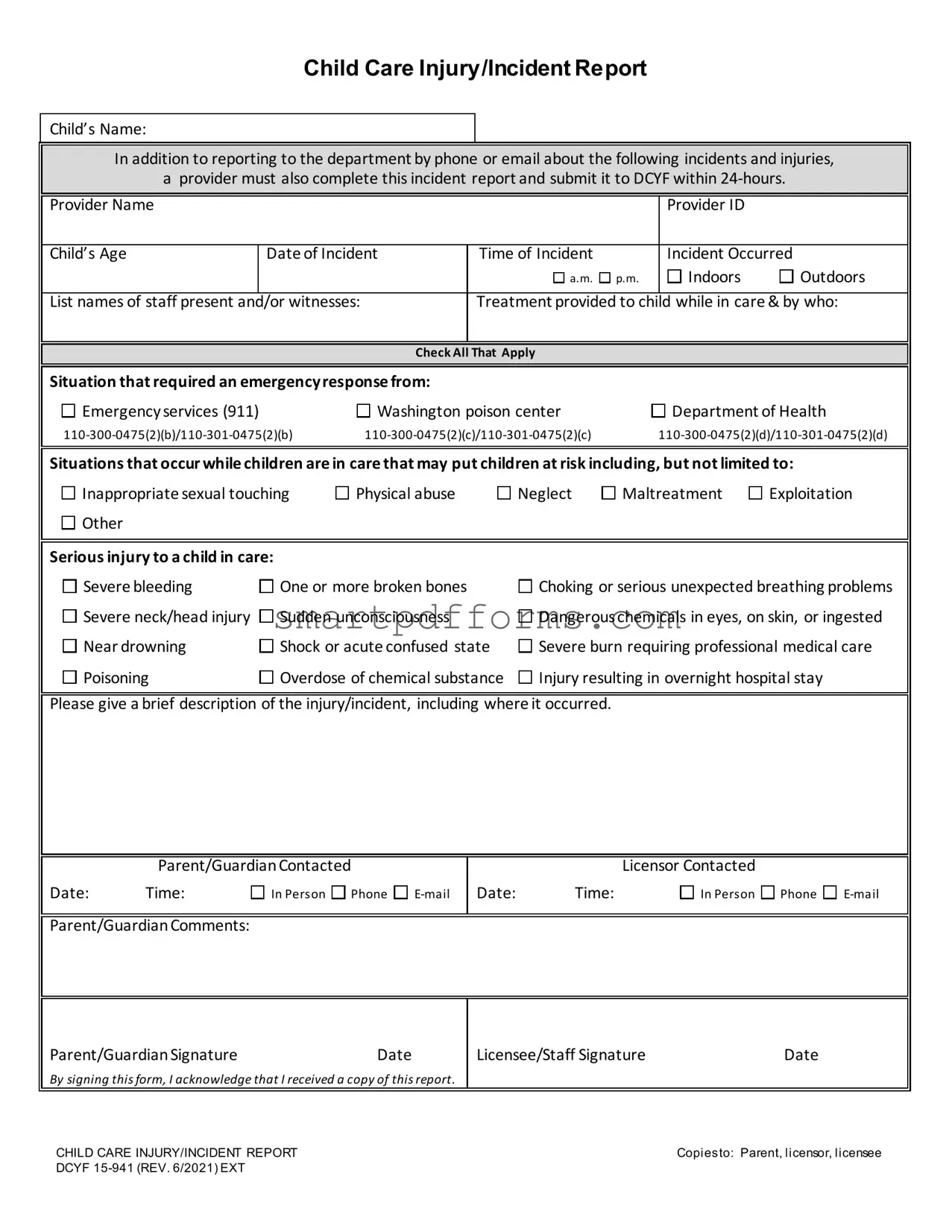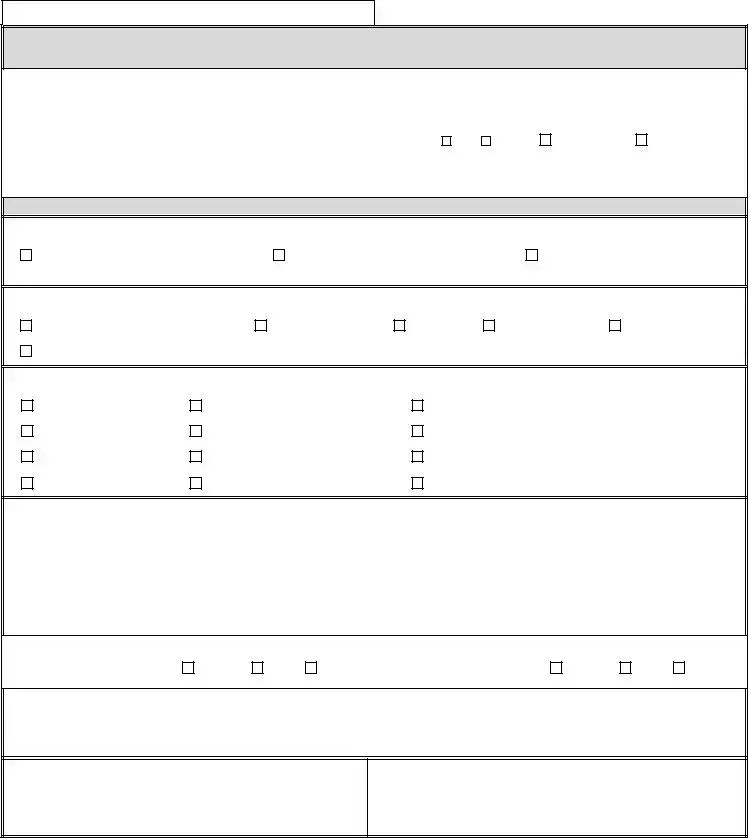- What is the purpose of the Child Care Incident Report form?
The Child Care Incident Report form serves a crucial role in maintaining the safety and welfare of children in child care settings. It is designed to document any injuries or incidents that occur while a child is under the care of a facility. This documentation is not only important for the immediate response to and treatment of any injuries but also for reporting to the Department of Children, Youth, and Families (DCYF) within a specific timeframe. The form helps ensure a standardized approach to incident documentation, which is vital for reviewing and implementing safety protocols and for legal compliance.
- Who needs to complete the Child Care Incident Report form?
Any child care provider who witnesses an incident or injury, or is informed of one, must complete the Child Care Incident Report form. This responsibility primarily falls on the staff members or caregivers present at the time of the incident. The form requires detailed input from the provider, including their name, provider ID, and information about the incident, ensuring accurate and timely communication with DCYF and involved parties.
- What types of incidents need to be reported using this form?
The form is comprehensive, covering a range of incidents and injuries that require reporting, including but not limited to:
- Inappropriate sexual touching
- Physical abuse
- Neglect
- Maltreatment
- Exploitation
- Other serious injuries such as severe bleeding, broken bones, choking, severe head/neck injuries, sudden unconsciousness, exposure to dangerous chemicals, near drowning, shock or acute confused states, severe burns, poisoning, overdose of chemical substances, and injuries resulting in an overnight hospital stay.
Such detailed categories ensure all significant and minor incidents are promptly recorded and addressed.
- How soon after an incident does the report need to be submitted to DCYF?
The report must be submitted to DCYF within 24 hours of the incident. This prompt submission is crucial for a timely response from DCYF, allowing for any necessary follow-up actions to be undertaken to ensure the child's welfare and comply with regulatory requirements.
- What information about the child needs to be included in the report?
Information required about the child includes the child’s name, age, the date and time of the incident, and a brief description of the incident, including its location. Accurate and detailed information is essential for understanding the context of the incident and for any necessary follow-up.
- What treatment, if any, was provided to the child at the time of the incident?
The form requires details of any treatment provided to the child while in care, including who administered the treatment. This section ensures there's a record of immediate care provided, which is important for medical and legal reasons.
- What if the incident required emergency services?
If the situation required an emergency response, the form has a section to document this, including whether emergency services, the Washington poison center, or the Department of Health was contacted. This information is critical for understanding the severity of the incident and the response initiated by the child care provider.
- How is the parent or guardian notified about the incident?
The form includes sections for documenting the parent or guardian was contacted, including the date, time, and whether the contact was made in person, by phone, or email. This ensures there's a record of communication with the child's family, which is crucial for transparency and collaboration in addressing the incident.
- What signatures are required on the form?
The form must be signed by the parent/guardian to acknowledge receipt of the report and by the licensee/staff member who completed the form. These signatures are essential for confirming that the incident has been appropriately recorded and that communication between all parties has occurred.

